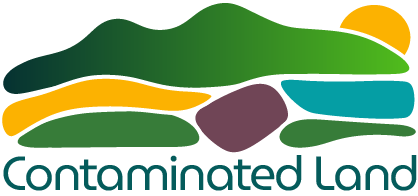In situ bioremediation refers to the process of enhancing the natural microbial degradation or transformation of contaminants directly within the ground, particularly in saturated zones. This approach includes variants such as biostimulation (altering environmental conditions to support indigenous microbes) and bioaugmentation (adding specialised bacteria). Technologies like biosparging, bioventing, and electro-bio treatments complement these methods. Microorganisms may degrade contaminants by using them as metabolic substrates or by employing them as electron acceptors. For instance, dehalorespiration enables anaerobic degradation of chlorinated solvents, with oxygen, sulphate, nitrate, or chlorinated compounds serving as terminal electron acceptors, depending on redox conditions.
Aerobic systems typically lead to full mineralisation of contaminants, while anaerobic processes often proceed in stages and can stall at harmful intermediate compounds like dichloroethylene (DCE) or vinyl chloride. To address this, practitioners may alter subsurface conditions (biostimulation) or introduce microbes with the necessary metabolic functions (bioaugmentation). Applications of omics tools—such as high-throughput sequencing and qPCR—allow for precise monitoring of microbial populations and activity, which is crucial for validating bioaugmentation efforts and ensuring that the desired degradative pathways are being followed effectively.
Effective in situ bioremediation depends on delivering microbes, substrates, electron acceptors, and contaminants to the same location and time at a microscopic scale, primarily via groundwater movement. Delivery strategies include active pumping, injection of reagents (e.g., molasses, oxygen-release compounds), or air sparging. The technique can be integrated with other approaches such as in situ chemical reduction (using zerovalent iron), nanoremediation, or electro-remediation. While the use of genetically modified microorganisms is under research, their field application remains contentious. Surface-based landfarming exists but is often restricted due to the risk of contaminant leaching into groundwater.
The method offers notable environmental and social benefits, including minimal surface disturbance, on-site contaminant destruction, and alignment with monitored natural attenuation strategies. However, challenges include potential mobilisation of contaminants, inhibition by site-specific factors (e.g., pH, co-contaminants), and complex, site-dependent system design. A broad range of contaminants are treatable, including VOCs, PAHs, PCBs, PFAS, and heavy metals like chromium. Regulatory concerns largely focus on unintended consequences of reagent use and the possible spread of contaminants. Overall, in situ bioremediation is a promising but technically demanding approach that requires careful planning and monitoring.


